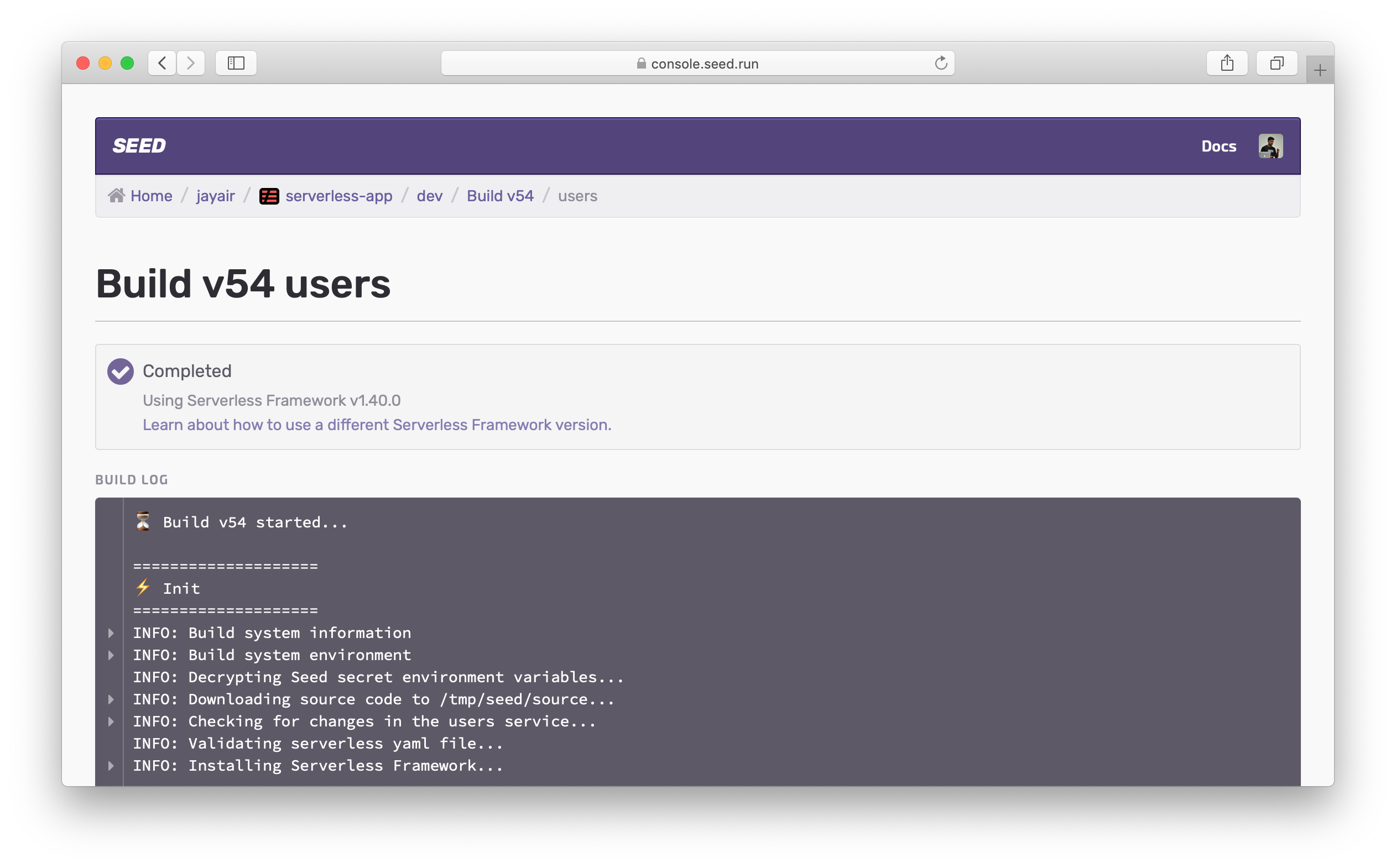Pinning the Serverless Version
Seed uses the following scheme while deciding which Serverless Framework version to use.
-
We use a recent stable release as a default when your app or service is created. We do this because Serverless Framework releases can sometimes be buggy and these end up breaking previously working builds. We update the default version every once in a while.
-
However, we do not update previously deployed apps with the new default version. These changes only affect any newly created apps or services.
-
To use a newer version of Serverless Framework for your builds, you can set it in your
serverless.yml.
You can see the version of Serverless Framework that was used for a build in the build log page. You can see this in the build logs as well.

To tell Seed which version to use (for example 1.40.0), you can set the following in your serverless.yml.
frameworkVersion: "1.40.0"
Alternatively, you can set a range.
frameworkVersion: ">=1.0.0 <2.0.0"
Where the Serverless Framework version to be used should be in between (and including) 1.0.0 or anything less than 2.0.0. In this case, Seed will use the highest locally cached version that matches the range.
Caching Versions
Seed internally caches versions of Serverless Framework to speed up your builds. So if you pin your service to use a specific version, Seed will first check if it’s been previously cached. If not, then it’ll be added to a job queue to cache it in the future.
You can read more about version pinning in the Serverless Framework docs.
Help improve this page. Edit it with GitHub
Was this page helpful? Let us know via Twitter
Having trouble configuring a CI/CD pipeline for your Serverless apps? Let Seed do it for you!
Learn More